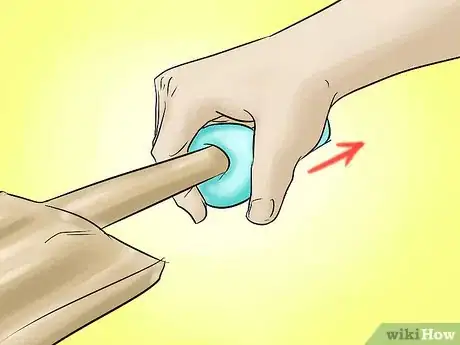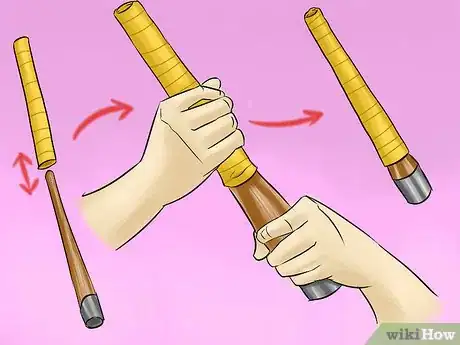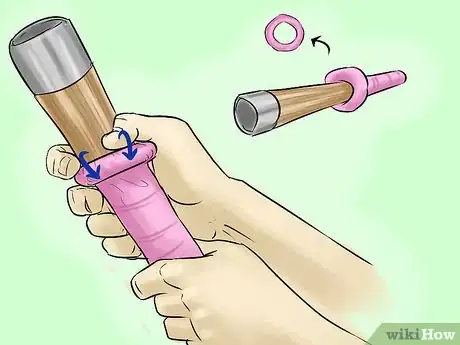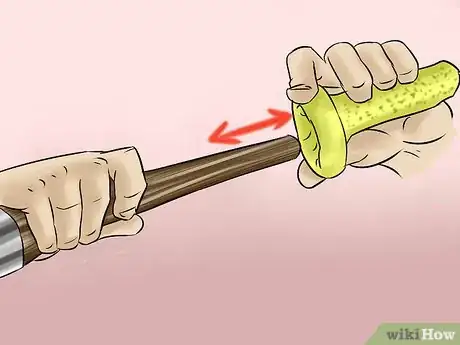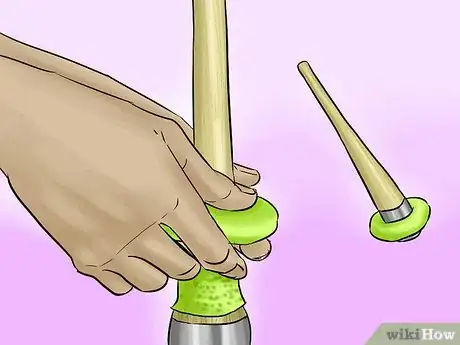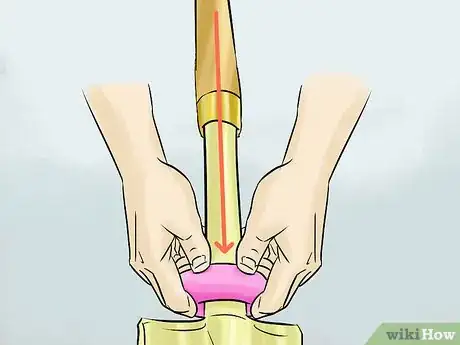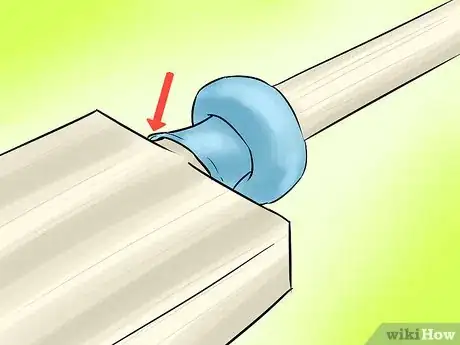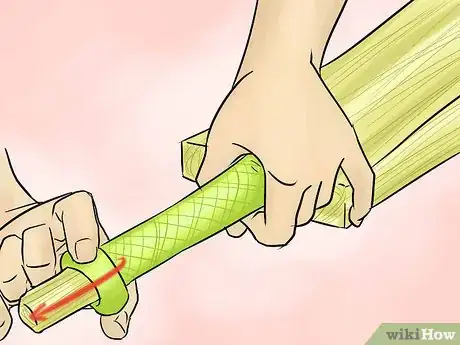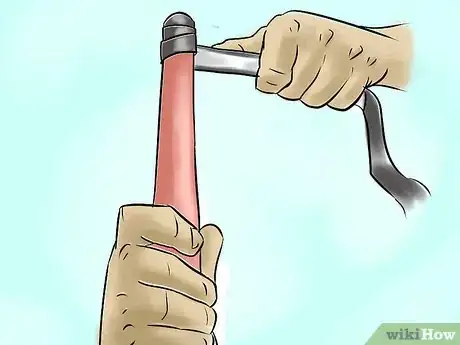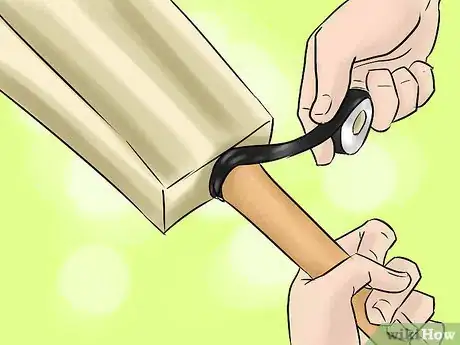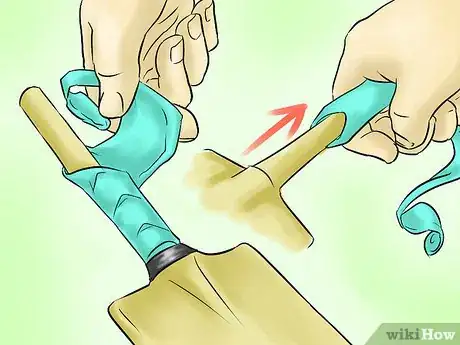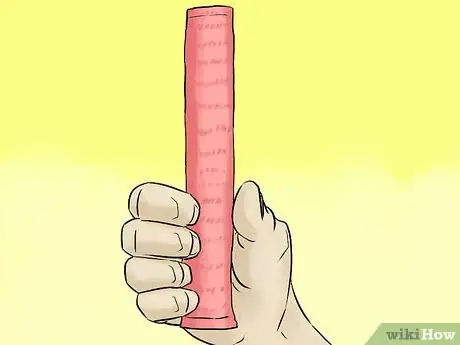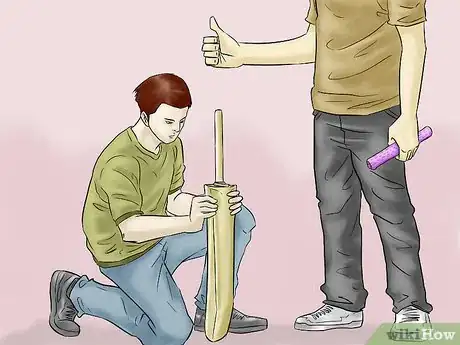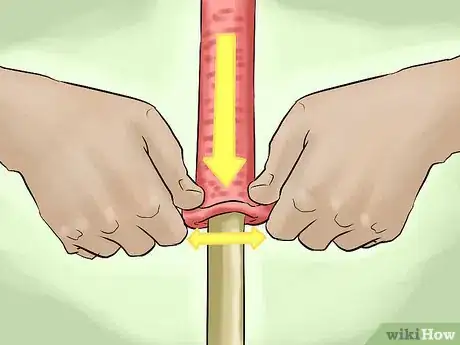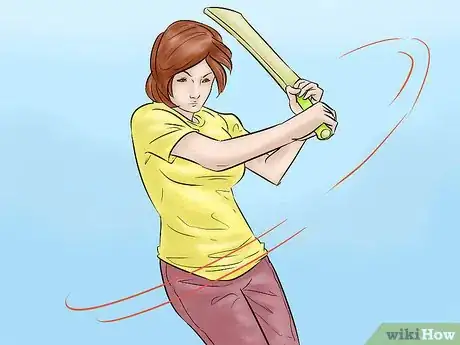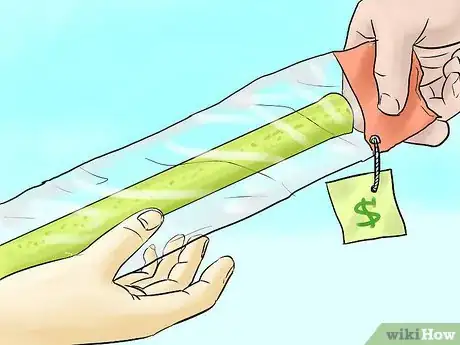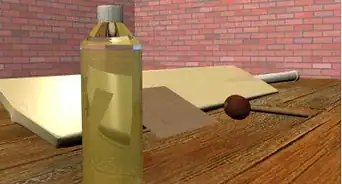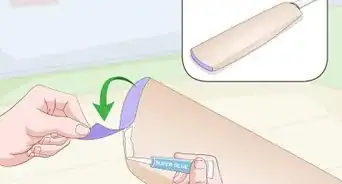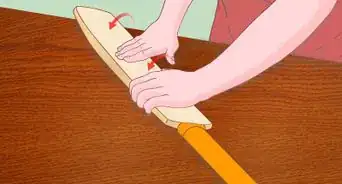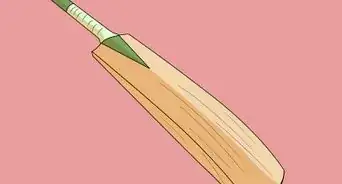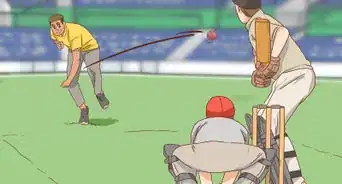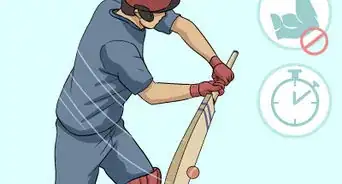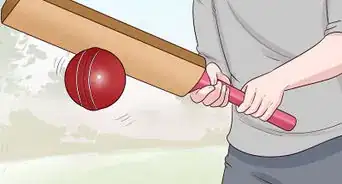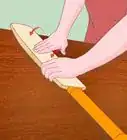This article was co-authored by wikiHow Staff. Our trained team of editors and researchers validate articles for accuracy and comprehensiveness. wikiHow's Content Management Team carefully monitors the work from our editorial staff to ensure that each article is backed by trusted research and meets our high quality standards.
This article has been viewed 68,134 times.
Learn more...
You can't play cricket with a bat that lacks a grip, since the bat will slip out of your hands due to sweat accumulated while playing. This is especially true if you are playing while wearing gloves. The grip that comes with the bat sometimes need to be changed. If you change the grip often, you will never have to worry about the bat slipping and messing with your game.
Steps
Changing Grip with a Grip Cone
-
1Remove the old grip. This will require strength, as it can be secured quite tightly. If you don't want to keep the old grip, then tear it. Start tearing from lower end. When torn in half, remove the other part of grip by pulling it.
-
2Secure the new grip onto the bat cone. Hold the bat cone firmly with one hand. Pass the new grip onto the thin end of the bat cone while pulling it to full extension. Hold the bottom edge of the grip between the thumb and index finger of your other hand.[1]Advertisement
-
3Roll the grip up the bat cone. Fold the rubber over itself until it forms an "O" shape. Leave only a small part of the grip unrolled at the top of the cone.
-
4Remove the rolled-up grip from the cone. Pass the grip back on the thin end of the bat cone, with the unrolled portion going on first.
-
5Roll the grip to the far end of the bat. Do this step carefully, being sure not to roll or unroll it further. Slip the hollow edge of the bat cone over the butt end of your cricket bat.
-
6Push the grip off the cone. Push it onto the shaft of the bat without unrolling the grip. Do this until it reaches the shoulder of the bat.
-
7Pull the top grip taut against the bat. You will need to keep it tight so that it doesn’t slip off. Be sure to align it flush against the edge of the shoulder.
-
8Unroll the grip. Now you are ready to unroll the grip down the handle of the bat using one hand, holding the grip firmly in place at the shoulder with the other hand.
-
9Wrap the grip over the butt of the bat. Cut off any excess grip hanging past the edge with scissors. Excess grip could get in your way while playing, so take your time to do this.
-
10Secure the grip in place. Wrap electrical tape around the edge where the grip meets the shoulder to secure it in place. Your bat should now be ready for a game of cricket.
Changing Grip without a Grip Cone
-
1Take off the old grip. Begin tearing it from its lower end. When the grip has been ripped in half, pull the rest of it off.
-
2Buy a new grip. New grips tend to be relatively inexpensive. Make sure that it is of good quality so that it will not need to be replaced too often.
-
3Hold the bat tightly. Hold the lower part of the new grip, making sure to hold it so that its handle remains facing upwards.
-
4Expand the grip. Once the bat handle has been fit slightly inside the grip, firmly and slowly force the grip to fit it the rest of the way down the handle.[2]
-
5Test the bat. The work is done, and you will now be ready to play cricket without fear of the bat slipping. Just be sure to change the grip once every three months or so.
-
6Buy a grip cone. This should only cost about $3.50, and the cost will end up being worth it, as you should be able to change your grip more easily using a grip cone in the future.[3]
Community Q&A
-
QuestionHow do I knock in a cricket bat?
 Community AnswerBuy a mallet and some raw linseed oil. Apply the oil and let in soak in. Then, knock the bat using moderate pressure until the edges are rounded and the bat is ready to use.
Community AnswerBuy a mallet and some raw linseed oil. Apply the oil and let in soak in. Then, knock the bat using moderate pressure until the edges are rounded and the bat is ready to use. -
QuestionHow can I make a cricket bat at home?
 Napier FamilyCommunity AnswerUse a stick or tennis racket.
Napier FamilyCommunity AnswerUse a stick or tennis racket. -
QuestionWhat can I use instead of linseed oil?
 Community AnswerSome artists use walnut oil, safflower, or sunflower oil with success. You need to use an oil that dries by thickening and hardens with exposure to air, otherwise the paint will never dry. Walnut oil is the most common substitute.
Community AnswerSome artists use walnut oil, safflower, or sunflower oil with success. You need to use an oil that dries by thickening and hardens with exposure to air, otherwise the paint will never dry. Walnut oil is the most common substitute.
